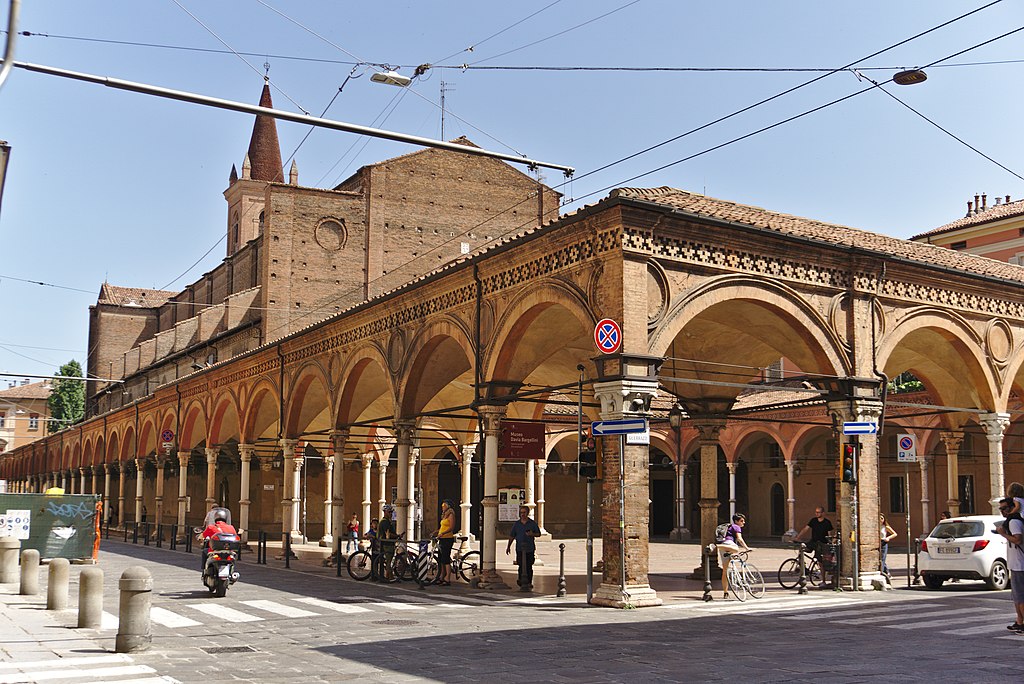Padua, Bologna and Tuscany’s Montecatini Terme are home to Italy’s newest UNESCO sites, achieving World Heritage status in August 2021. This boosts Italy’s total to 58, now the country with the most heritage sites in the world. Here’s a quick peek at these cultural gems.
Padua’s 14th Century Fresco Cycles

In Italy’s northeastern corner between Verona and Venice lies Padua, Padova in Italian. This picturesque town is home to Italy’s second oldest university — founded in 1222 — and thrives today as a lively university town.
Within the medieval walls of the city is an unassuming brick chapel with an unusual looking name: the Scrovegni Chapel (click here for pronunciation). Like many chapels throughout Italy, this structured was named for the wealthy banker who funded its construction in the early 1300s. Inside, it is anything but unassuming, decorated with frescoes from a variety of artists, notably Giotto, the artist who marked a turning point from medieval art to Renaissance art, because of the depth and humanism depicted in his works. The chapel frescoes are considered among the most important masterpieces from the Proto-Renaissance.
Frescoes fill the chapel walls and ceiling, telling with great emotion and detail the story of the lives of the Virgin Mary and Jesus. “It’s an absolute Mecca for everyone interested in art, especially in Renaissance,” writes Zuzanna Stanska for Daily Art Magazine.
Bologna’s Porticoes
The porticoes of Bologna have been waiting in the wings on UNESCO’s tentative list for quite some time, and this year they officially stepped onto the World Heritage stage. Arcades of this type can be found throughout Italy, so what makes Bologna’s particularly special?
“Architecturally, it is the impressive, well-preserved porticoes (portici, in Italian) that have come to define the cityscape,” explains travel writer Irene S. Levine for Forbes. “These stunning covered walkways, located throughout the Medieval historic center, stretch some 25 miles in length. Constructed between the 11th to 20th centuries, each portico seems to be one-of-a-kind, reflecting the diversity of styles and materials used over different eras.”
For UNESCO, the porticoes represent urban and social functions across the centuries — think open air markets, covered walkways and public space protected from the elements. “The porticoes have become an expression and element of Bologna’s urban identity. “
Situated midway between Florence and Venice, Bologna is the capital of the northern region of Emilia-Romagna, is renown for its cuisine and is home to the oldest university in Europe.
Tuscany’s Montecatini Terme
Montecatini Terme lies about an hour from Florence by train or car, in the province of Pistoia. This year, UNESCO recognized the hillside hamlet as one of the great spa towns of Europe. In total, eleven spa towns — all centered around natural mineral springs — in seven countries across Europe were recognized for their historical and cultural significance. Known for its healing waters since medieval times, Montecatini Terme contributed to the international spa culture which was all the rage in the 18th and early 19th centuries.
Today, visitors can still “take the waters”, take in the majestic architecture, and experience other wellness treatments through the posh Terme di Montecatini spa.
Since 1972, UNESCO has designated more than 1,000 sites worldwide as World Heritage Sites. Recognized for their outstanding universal value or natural beauty, the World Heritage Site list is “the ultimate traveler’s guide — a bucket list of destinations worth seeing.” – source


Your post reminded me. I really do need to stop passing by Bologna when I take the train through Italy and stay for awhile! Thanks for the update.
Bologna is still on my wish list too!
Hooray for Italy!! And big round of applause for your writing.
Love you very much❤️
Thank you ❤ love you!
Ah, good. ANOTHER reason to go to Tuscany again, since I was unaware of Montecatini Terme. Grazie.
Bologna I’ve seen only once, and walked under those porticos. It didn’t occur to me that they were — when one considers it — as much a part of the fabric of the place as any of the remarkable buildings, museums, etc., but of course they are.
As for the Scrovegni Chapel, one of the most astounding places on the planet. An experience not to be missed, if one can possibly get there.
Your readers should be advised that advance reservations to the chapel are a necessity. Many years ago, The Counselor and I simply showed up one day, and were fortunate to get inside, just before stricter controls were put in place requiring reservations. Which — as you know — are now common for many of the major sites in Italy and elsewhere.
By all means, see this place. And allow an hour afterwards to simply sit and recover from the experience.
Thank you for the insider information on the chapel! I’m so glad you were able to get inside, it seems quite awe-inspiring and I hope to visit someday. The more I write about Italy, the longer the wish list becomes. Hope you are both well. Cin cin!
If you’re in Bologna, Verona, Venice, you’re an easy train trip away from Padua. The Counselor and I zipped out from Venice one day, and were back in time for dinner. In the mean time, most of what we thought we knew about painting had been stood on its ear, courtesy of S. Giotto.
Sounds well worth the journey! I would love to see it some day. 🙂